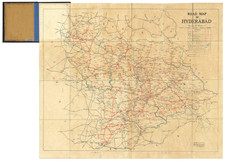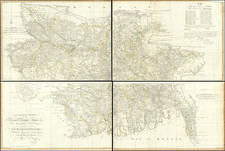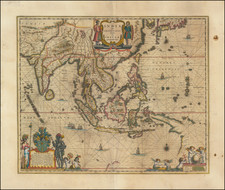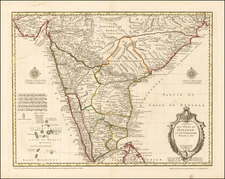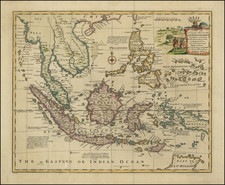This 1829 map by John Walker represents the earliest known comprehensive cartographic depiction of Burma, currently Myanmar. Designed to accompany Crawfurd's diplomatic mission to negotiate with King Bagyidaw post the First Anglo-Burmese War (1824-1826), it focuses on the Irrawaddy Valley. This map outlines the journey from the Burmese royal capital of Ava to Calcutta, delineating major cities like Mandalay and Yangon, yet reveals extensive blank areas, reflecting the limited European knowledge of the region at that time.
The First Anglo-Burmese War, a conflict between the Konbaung Dynasty's King Bagyidaw (ruled 1819–1837) and British India, stemmed from trade disputes and territorial expansion. The war concluded with the Treaty of Yandabo in February 1826, which resulted in territorial concessions and indemnities that strained the Burmese economy and destabilized Bagyidaw’s reign.
Following the war, in 1826, British envoy John Crawfurd was dispatched to Ava to consolidate the treaty terms. The mission, which navigated the Irrawaddy aboard the steamer Diana, resulted in the formal cession of Assam, Manipur, Arakan, and Tenasserim to British control. These discussions laid the groundwork for the 1826 Treaty of Yandabo and influenced subsequent diplomatic engagements.
Under the shadow of the Third Burmese Empire (1752–1885), these events marked a shift in power dynamics, leading to increased British influence in the region. The empire, under the rule of Bagyidaw, eventually succumbed to internal strife and external pressures, culminating in the annexation of Upper Burma by the British in 1885.
Crawfurd's expedition also dedicated time to scientific inquiry and reconnaissance. During a delay for boat repairs, the team collected fossils and botanical specimens, including nearly 18,000 plant samples for the Royal Botanic Garden, Kolkata, and identified prehistoric remains near Magwe. This ancillary scientific research contributed valuable biological and paleontological data to British academia.
The publication of this map not only reflects a significant historical episode but also demonstrates early 19th-century European efforts.









